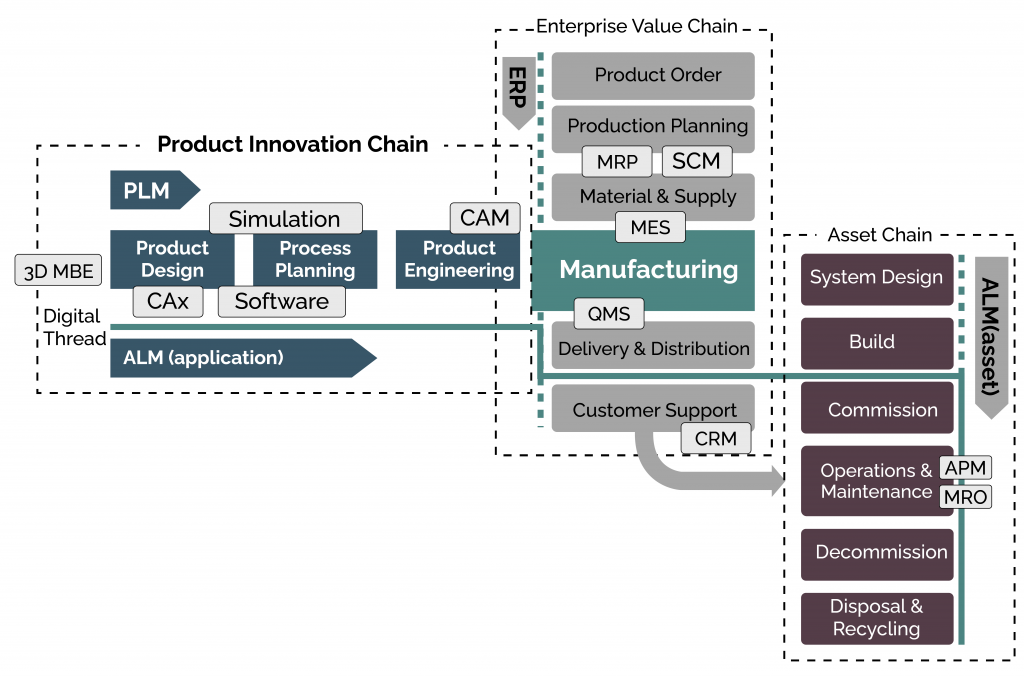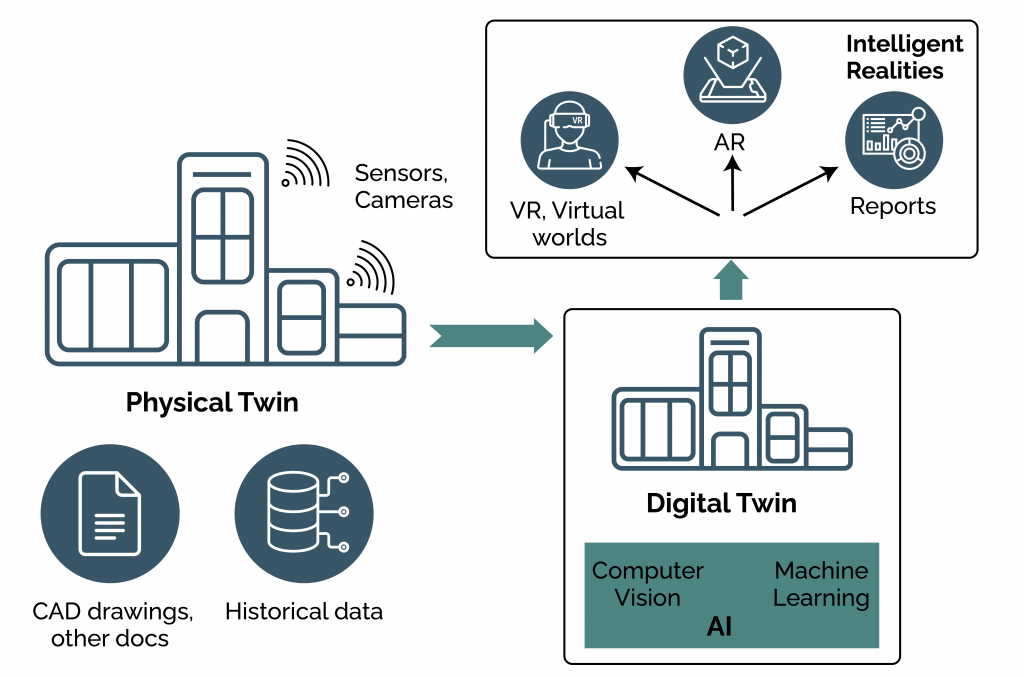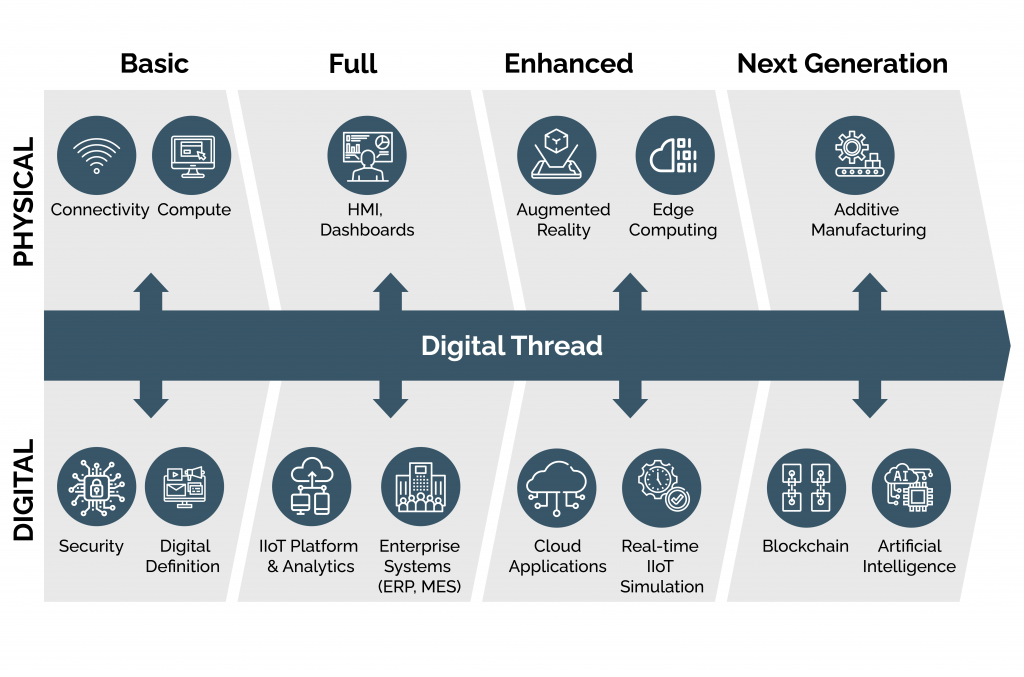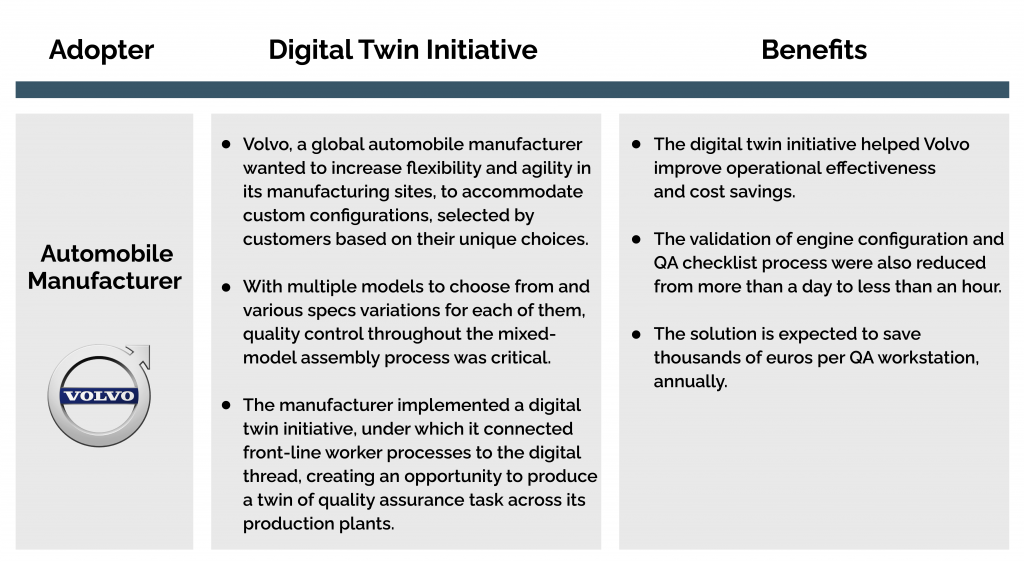Most enterprises aspire to be digitally transformed. Innovation as the engine of growth favors this initiative, especially in the immersive technologies space. A core enterprise priority now is to deliver new customer experiences through digital products and services. This mandates the collection and analysis of operational data used to make process adjustments for cost reduction, efficiency improvement, and reliable business outcomes. The biggest challenge today is deploying disparate technologies within a unified business function.
The Digital Twin is foundational to any digital transformation. It offers the latest representation of a system while mimicking an enterprise’s machines, workflows, controls, and systems. A communication framework connecting traditionally siloed components and processes is still required. With such a framework, companies can achieve an integrated view of an asset throughout the digital product lifecycle. The Digital Thread is that framework that offers snapshots of a product’s or system’s lifecycle. Engaging both these technologies can potentially enhance your operating models, revenue streams, and workflows. It propels performance across the product innovation chain, enterprise value chain, and asset chain.
 How Digital Twin and Digital Thread Differ?
How Digital Twin and Digital Thread Differ?
The Digital Twin is an executable virtual model of the physical equipment that can be iteratively updated across the entire lifecycle. It specifies the engineering components, the materials used, and the behavior of these components. It includes the operational data and as-built information unique to asset representation.
The Digital Thread is a communication framework that enables a connected data flow while offering an integrated view of the asset’s data throughout its lifecycle. It covers all the siloed functional perspectives. The digital thread paradigm delivers the correct information to the right place at the right time.
The Augmented Reality Dimension
Augmented Reality (AR) and Digital Twins can be relatively merged to offer seamless, immersive experiences. However, it is essential to understand the unique set of challenges that come with deploying these technologies. In the AR industry, dealing with the deluge of data flowing from numerous connected sensors, devices, and components is a pervasive challenge. AR requires the building of virtual copies of products and processes. Implementing the Digital Twins in AR helps assess key performance indicators like unplanned downtime, throughput, changeover time, material wastage, etc.
 This helps identify and isolate issues and deploy fixes. Using the Digital Twins, iterations are made cost-efficient and less time-consuming. Digital twins also help position companies for next-gen computing that is interactive, spatial, and intelligent. All of which is pivotal to Immersive experiences provided by AR.
This helps identify and isolate issues and deploy fixes. Using the Digital Twins, iterations are made cost-efficient and less time-consuming. Digital twins also help position companies for next-gen computing that is interactive, spatial, and intelligent. All of which is pivotal to Immersive experiences provided by AR.
Digital twins are components of a larger digital continuum-a Digital Thread. The Digital Thread binds data sources used in AR implementations to create a virtuous cycle from start to end. It renders better efficiency gains and performance improvements. Thus, the baseline digital twin reflects the dynamics of the environment it mirrors when integrated with AR using:
- Connectivity and networks to transfer sensor data into the models used in AR.
- Data intelligence to translate raw data into actionable data insights that can help in the AR model evolution.
- Simulation offers a virtual view of operations using AI and ML.
- A human/machine interface on wearable or mobile devices to get the context of a machine or system meaningfully for a specific function.
Key AR-Digital Twins Implementation Challenges
Operational Disparity: The Digital Twins often exhibit the inability to scale and cover all the envisioned state stages in AR modeling. While moving from a pilot to full-scale implementation, getting commercial value out of your Digital Twins and AR assets becomes a problem compared to when experimenting with application code. There are often disparities between the virtual representation creation of the current state and an aspirational future state.
Resource Management Problems: The lack of readily available 3D content and the complications that arise with the need to scale up content as conditions change is an inconvenient process in terms of AR. With Digital Twins, live insights are generated as processes take place. There is a lack of an interface that can effectively convey and convert these insights. In recent times, AR has become the go-to technology for creating user manuals, instructional tutorials, and quality assurance manuals. Although these custom-created tutorials provide higher ROI initially, updating them is a big challenge.
Modernization Setbacks: Also, products and work processes need constant refinement and modification to match productivity goals. This requirement adds to the challenges above. Often in AR, legacy equipment is connected to several connectivity and control systems. This equates to challenges in capturing the correct data, aggregating it in a meaningful way, and analyzing it.
Weaving a Solution with Digital Threads
Augmented Reality can be compounded with Digital Twins to solve the inherent and independent complexities of these technologies.
 All the products and processes have a digital identity with unique characteristics. In practicality, there is a constant need to update and scale content in an ever-changing environment.
All the products and processes have a digital identity with unique characteristics. In practicality, there is a constant need to update and scale content in an ever-changing environment.
The dynamic data sets collected through various IoT sensors present on the physical systems can be mapped out as a single Digital Thread. This Digital Thread holistically combines the Digital Twin of a system and the corresponding AR processes. It is the collaborative unit of multiple Digital Twin instances within the simulated systems’ environment.
 Live Digital Twin data offers a real-time view of internal processes and system statuses. Hence, the Digital Thread acts as a single composition of all the disparate digital identities within the physical system or operation.
Live Digital Twin data offers a real-time view of internal processes and system statuses. Hence, the Digital Thread acts as a single composition of all the disparate digital identities within the physical system or operation.
Demonstration with the Volvo Case Study
 The Volvo Group specializing in manufacturing trucks, construction equipment, and industrial engines employed Digital Twin and Digital Thread technologies to update and scale QA for AR experiences continuously. Each engine required 40 checks with about 200 possible QA variants that had to be executed in 8 minutes at the QA station. Usually, it took five weeks to train employees on this complex inspection procedure. So, Volvo combined Digital Twins and Digital Threads to establish and maintain data flow consistency and efficiency. They leveraged the Internet of Things (IoT) for data integration across various platforms to ensure real-time data synchronization.
The Volvo Group specializing in manufacturing trucks, construction equipment, and industrial engines employed Digital Twin and Digital Thread technologies to update and scale QA for AR experiences continuously. Each engine required 40 checks with about 200 possible QA variants that had to be executed in 8 minutes at the QA station. Usually, it took five weeks to train employees on this complex inspection procedure. So, Volvo combined Digital Twins and Digital Threads to establish and maintain data flow consistency and efficiency. They leveraged the Internet of Things (IoT) for data integration across various platforms to ensure real-time data synchronization.
A single integrated digital entity was delivered using AR so QA technicians could access the latest engine configurations near real-time. This AR solution overlaid 3D data and QA information directly on the physical systems through computer vision for tracking and anchoring content. This technology integration helped Volvo reduce the time taken to update and validate a QA process from 24 hours to less than an hour. Training times were drastically reduced from 5 to less than two weeks.
Wrapping up
AR companies need to consider the Digital Thread to achieve greater efficiency and carve a niche in this dynamic and challenging space. Strategically leveraging Digital Twins and Digital Threads helps achieve true digital transformation with a higher market share in the AR experience lifecycle.
Connect with Radiant to learn more!


